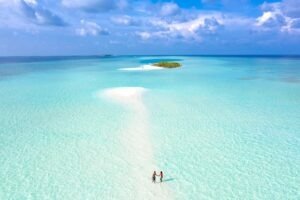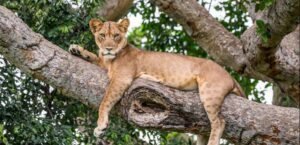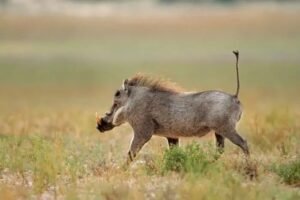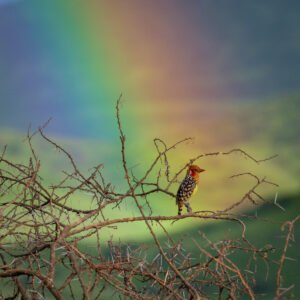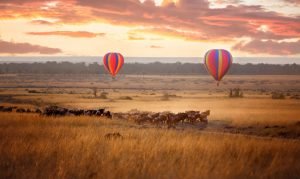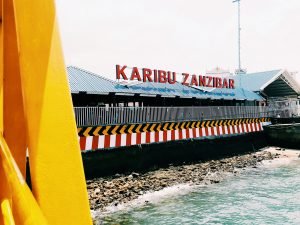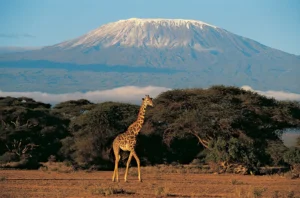
SOME USEFUL FACTS ABOUT TANZANIA

Tanzania, officially the United Republic of Tanzania, is a place where nature is at its wildest. It is surrounded by three great lakes of Africa – Lake Victoria, Lake Tanganyika and Lake Malawi. Vast swathes of Savanah grasslands decorate Tanzania’s hinterlands and the real beauty of the country shines through its amazing biodiversity and wildlife.
Official Name: United Republic of Tanzania
Form of government: Republic
Administrative capital: Dodoma
Commercial capital: Dar es salaam
Area: 947,300 square kilometres
Official language: Kiswahili or Swahili, English
Money: Tanzanian shilling
Time: Local time is GMT +3 hours
GEOGRAPHY
Tanzania is the largest country in East Africa and includes the islands of Zanzibar, Pemba and Mafia. Situated just south of the equator, Tanzania is bordered by the Indian Ocean and eight countries – Kenya, Uganda, Rwanda, Burundi, Democratic Republic of Congo, Zambia, Malawi and Mozambique.
This beautiful country is home to Mount Kilimanjaro, the tallest mountain in Africa. Three of the largest lakes on the continent are also found in Tanzania – Lake Victoria in the north, Lake Tanganyika in the west and Lake Nyasa in the southwest.
PEOPLE & CULTURE
Tanzania’s population includes around 120 different African tribal groups. The largest group is the Sukuma, who live in the north-western part of the country, south of Lake Victoria.
The country’s earliest people were hunters and gatherers, who inhabited the land as far back as 5000BC. Around 800AD, traders moved to the country from India, Arabia and Persia (present day Iran), creating a diverse mix of peoples and cultures.
Today, about 90 percent of Tanzanians live in the rural areas and live off what they can grow on the land. In more recent years, however, people have started to migrate from the countryside to developing towns and cities.
CLIMATE
Tanzania’s climate is predominantly tropical. Coastal areas are usually hot and humid, but on the beaches a sea breeze cools the air considerably. The average day temperature is 30c. Tanzania has two rain seasons – the long rains from late March to June and the short rains from November to January.
The long rains in the heavy downpours, often accompanied by violent storms, bu the short rains tend to be much less severe. The hottest time of the year is from December to March, before the long rains begin.
The coolest months are june, july and August, when the weather is often overcast. In high altitudes areas such as Kilimanjaro and the Ngorongoro highlands, temperature can fall below freezing.
NATURE
Tanzania has lots of amazing wildlife! Some of Africa”s most famous mammal species are native to this beautiful country, including the wildebeest, zebra, giraffe, elephant, rhino, lion and leopard. Crocodiles and hippopotamuses can be found along riverbanks and the shores of lakes, and giant turtles live off the coast, too!
Tanzania has a number of important national parks and nature reserves – such as the Selous Game Reserve, where one of the largest populations of elephants live, and The Gombe Stream National Park, where animal expert Dr Jane Goodall carried out her famous research on chimps in their natural habitat. The Serengeti National Park, Tanzania’s oldest and most popular park for tourists, is home to over 1.7 million wildebeest and about a million other animals.
GOVERNMENT
Tanzania has a president, who is the head of the country. Presidents are elected through a General Election, held once every five years. Zanzibar has its own President, assembly and laws.
Tanzania’s national and political capital is a city called Dodoma, located in the center of the country. Until 1974, the capital was Dar es Salaam, on the east coast of Tanzania. Dar es Salaam is still the country’s biggest and richest city, and many government offices remain there.
HISTORY
African tribes have lived in the area that is now Tanzania for thousands of years. In the 18th century, Arab traders used the native people as slaves. During this time, Zanzibar became the center for the Arab slave trade.
From 1890, Britain controlled Zanzibar, and Germany controlled Tanganyika (today an area in mainland Tanzania), until Britain gained full control of the region following World War II. In 1964 the independent nation of Tanzania formed when Zanzibar and Tanganyika merged as one.
Some of the world’s oldest human settlements have been found in Tanzania, at a site called Olduvai Gorge. The hundreds of fossilized bones and stone tools excavated here, are over two millions years old! These fossils have been important in the study of human evolution.
VISA ISSUING CENTERS AND AUTHORITIES.
A visa may be obtained at the united republic of Tanzania mission abroad or consulate an d also on the arrival at all designated entry points.
In case of referral and multi visas, applications should be sent to the office of Principal Commissioner of Immigration service’s Dar es salaam or at the office of the commissioner of Immigration of Zanzibar.
VISA FEES
Standard rate for ordinary Visa fee is usd 50, for multiple entry visa is usd 100 and transit visa is usd 30 except for the following nationals with their specific visa rates in bracket; USA-(100) and Ireland-(USD 100).
BANKING
Banks and bureau de changes are available at the airports and all major towns. Banking hours are from Monday – Friday 08:30a.m to 03:00p.m, Saturdays 08:30a.m-01:30p.m. The banks are closed on Sundays
CREDIT CARD AND TRAVELER’S CHEQUES
Credit cards (Access, MasterCard, Visa, American express and Eurocard) are accepted only at the major lodges, hotels and travel agents. A surcharge may be added for this service. ATM and 24-hour cash machines are available in branches of major banks. Traveler’s cheques in pounds sterling or US dollar are recommended, though it may be difficult to exchange them outside of the main cities.
